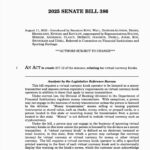Introduction to Quantum Technology
Quantum technology can handle vast amounts of data and tackle intricate problems in mere seconds instead of taking decades. Intriguingly, quantum technology emerged in the early 1900s, evolving from quantum mechanics—a branch of physics that explores the behavior of matter and energy at incredibly small scales, such as atoms and subatomic particles. In practical terms, it is implemented in contemporary technologies like transistors, lasers, MRI machines, and quantum computers, which are reported to be 300,000 times faster and more powerful than today’s devices. Google’s latest quantum chip, Willow, dramatically reduces computation times and could potentially equip hackers with the means to unlock the algorithms supporting Bitcoin and other cryptocurrencies. Quantum computers pose a threat to Bitcoin’s cryptographic systems, particularly the Elliptic Curve Digital Signature Algorithm (ECDSA). Experts like Adam Back and Michael Saylor contend that quantum risks to Bitcoin are not an immediate concern because such applications necessitate advanced quantum hardware that may take years, if not decades, to develop.
Current Status of Bitcoin and Quantum Safety
The research and development pertaining to quantum computers is progressing rapidly, but is Bitcoin currently quantum-safe? Not at this stage, though developers are making efforts to upgrade the network to mitigate potential quantum risks, including challenges to encryption. While it’s crucial to acknowledge these risks, it’s equally important to clarify that they are far from being legitimate threats at this moment.
Did You Know?
Albert Einstein made considerable contributions to the advancement of quantum technology. He laid the foundation for quantum mechanics through his work on the photoelectric effect, which uncovered the composition of light. He was awarded the Nobel Prize for this, contrary to the common belief that it was for his theory of relativity.
The Impact of Quantum Computing on Bitcoin
Quantum computing may have a considerable impact on Bitcoin, primarily due to its potential to undermine the cryptography that secures its network. The relationship between quantum computing and Bitcoin (BTC) has been a subject of much discussion, and for good reason. It can disrupt the network and possibly compromise Bitcoin wallets by exploiting vulnerabilities inherent in the asymmetric cryptography that secures them. Specifically, the ECDSA, the asymmetric cryptography utilized in Bitcoin, is susceptible to attacks from quantum computers.
Bitcoin wallets rely on ECDSA to create a pair of private and public keys, with security that hinges on the challenging elliptic curve discrete logarithm problem (ECDLP), which classical computers cannot resolve. The genuine concern lies in cracking Bitcoin private keys with quantum computers since these keys govern your Bitcoin. If lost, the Bitcoin is irretrievable. When a private-public key pair is created, the public key is designated for verification while the private key is intended for signing. Mathematician Peter Shor developed the Shor quantum algorithm in 1994, capable of breaking the assumed security of the algorithms in asymmetric cryptography. While all existing algorithms demand considerable time, effort, and resources to derive a private key from the public key, the Shor algorithm could expedite this process.
This indicates that a person, organization, or anyone with a powerful quantum computer could potentially use the Shor algorithm to generate a private key from its corresponding public key, thus creating counterfeit digital signatures for transactions. You now understand that quantum technology could compromise Bitcoin wallets by exposing their private keys. This risk intensifies as quantum computing grows, particularly for wallets associated with older addresses or those with recycled public keys. Quantum computing might enable the reverse-engineering of private keys from these at-risk public keys, jeopardizing the security of Bitcoin holders.
The Future of Quantum Threats to Bitcoin
By 2025, it’s suggested that quantum computers will be still many years away from breaking ECDSA. Even Michael Saylor views such worries as unfounded. For the time being, Bitcoin users can rest easy but should remain informed about best practices to safeguard against any future quantum threats.
Here’s a succinct overview of the connection between quantum computing and Bitcoin:
Did You Know?
The progress of quantum computing can be evaluated by the number of qubits (the basic units of information) contained in a single processor. Currently, the most powerful quantum computers operate within the range of 100 to 1,000 qubits. Estimates suggest that between 13 million and over 300 million qubits would be necessary to compromise Bitcoin’s security.
The Issue of Lost Bitcoin
Analysts estimate that between 2.3 million and 3.7 million Bitcoins are permanently lost, representing approximately 11% to 18% of the total fixed supply of 21 million. What could happen to these lost Bitcoins if quantum recovery technologies enable inactive wallets to be reactivated? Consider the coins attributed to Satoshi Nakamoto alone, estimated at 1 million. Should a quantum computer crack their wallet and reintroduce the coins into circulation, it could lead to significant market volatility.
Quantum computers could potentially recover lost Bitcoin by deciphering the cryptographic keys safeguarding those wallets, which often belong to addresses with inaccessible or lost private keys, making them easy targets. These accounts are likely some of the oldest Bitcoin addresses, utilizing pay-to-public-key (P2PK) formats that have never undergone updates or reuse. Consequently, these addresses remain exposed, with no one available to refresh them. The advancements in quantum computing could exploit these vulnerabilities and unlock dormant wallets.
In May 2025, global asset manager and technology provider BlackRock issued a warning in its iShares Bitcoin Trust (IBIT) filing, stating that quantum computing poses a substantial risk to Bitcoin’s long-term security due to its capability to disrupt current cryptographic protections.
The recovery of lost Bitcoin could generate both economic and ethical considerations. Reintroducing these coins into circulation might disrupt Bitcoin’s scarcity characteristic, subsequently affecting its market value. Discussions are ongoing regarding the best methods to preserve Bitcoin’s economic and ethical integrity. Many industry veterans, such as prominent Bitcoin expert Jameson Lopp, argue that those coins should be permanently burned and eradicated to safeguard the network, while others advocate for their redistribution to promote wealth balance.
Protecting Your Bitcoin
To safeguard your Bitcoin, minimizing public key exposure is crucial. Simple actions can help users achieve better peace of mind. Security measures for Bitcoin must always be taken into account, regardless of quantum threats. Fraud remains a persistent danger in the crypto space. Phishing continues to be one of the most prevalent scams in cryptocurrencies, exemplified by a new zero-value scam where a fraudulent address is added to the transaction history of a targeted wallet. When the owner initiates a transaction, they might inadvertently select an address from their history, including the fake one, without needing to access a private key.
Approximately 25% of all Bitcoins are stored in addresses using pay-to-public-key (P2PK) or reused pay-to-public-key-hash (P2PKH) formats. These methods often expose the public key linked to a user’s address, making the vulnerabilities to quantum computing more evident, as the compromised public keys are more susceptible to quantum attacks via the Shor algorithm.
You can mitigate this risk by avoiding address reuse. Consider joining a platform that automatically changes your wallet’s address with each transaction. Reusing an address increases the likelihood of exposing your public key during a transaction. Ideally, create new addresses for every transaction and use wallets that support Taproot and SegWit. Pay close attention when sending transactions to your wallet’s addresses, as these wallets provide enhanced security features.
Address poisoning is another common phishing tactic that has cost users millions of dollars. It occurs when malicious actors send small transactions from wallet addresses that closely resemble those of victims, tricking them into copying the incorrect address for future transactions.



















